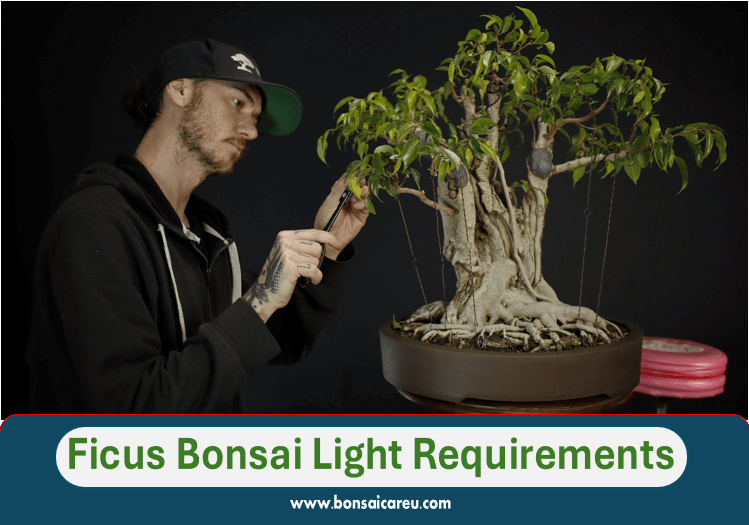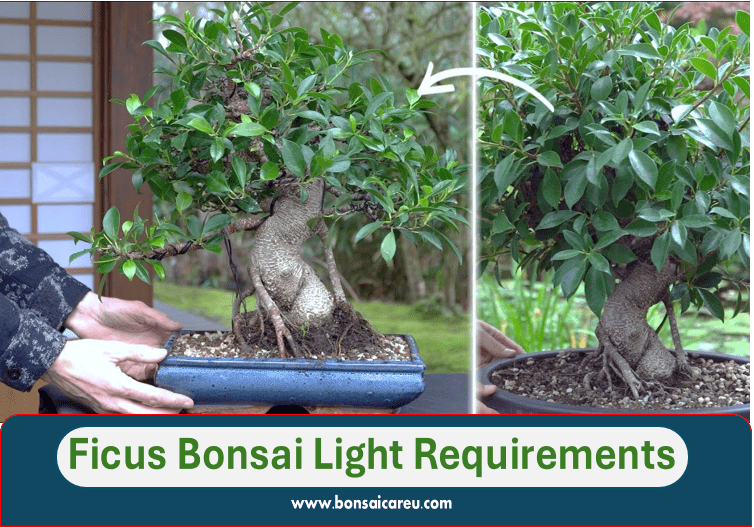
Creating the perfect environment for your ficus bonsai involves understanding its specific light requirements. Ficus bonsai trees are native to tropical regions and require bright, indirect light to thrive. Placing your bonsai near a window with filtered sunlight will provide the optimal light for healthy growth.
Avoid placing your bonsai in direct sunlight, as this can scorch its delicate leaves. Understanding and meeting the light requirements of your ficus bonsai will contribute to its overall well-being and longevity. You can enjoy a thriving and beautiful ficus bonsai in your home or garden by providing the right amount of light.
Table of Contents
Providing the right amount of light is crucial to ensuring the optimal growth of a Ficus bonsai. These plants typically require bright, indirect sunlight to thrive. It is essential to place them where they can receive sufficient light without being exposed to direct sunlight for extended periods.
In their natural habitat, Ficus Bonsai thrive in bright, indirect sunlight. Indirect sunlight mimics the dappled light found under tree canopies in the wild.
Ficus Bonsai needs consistent bright light when kept indoors, preferably near a window. A south-facing window is ideal for ensuring the tree receives adequate sunlight. Consider using a grow light if natural light is insufficient to meet the plant’s needs. Remember to rotate the bonsai periodically to ensure all sides receive equal light exposure.

Ficus bonsai plants require specific types of light to thrive and grow beautifully. Understanding the different types of light for ficus bonsai is crucial for ensuring their health and overall well-being. Whether you are considering natural sunlight or artificial light sources, providing the right amount of light is essential for the growth and development of your ficus bonsai.
Natural sunlight is essential for the growth of ficus bonsai. Place your ficus bonsai in a location where it can receive bright, indirect sunlight for at least 6-8 hours every day. Avoid exposing the bonsai to direct, harsh sunlight, as it can lead to leaf burn and damage. It is recommended to rotate the bonsai regularly to ensure uniform light exposure and prevent the plant from leaning toward one direction.
Artificial light sources can supplement natural sunlight or be the primary source of light for ficus bonsai, especially when natural light is limited. When using artificial light, choose full-spectrum grow lights to provide the necessary wavelengths for photosynthesis. Place the grow lights appropriately from the bonsai to avoid causing heat stress or excessive light exposure. An ideal setup involves using a timer to mimic natural daylight hours and ensure consistent light exposure for the bonsai.
Ficus bonsai trees require precise light intensity measurements to thrive. Quantifying light intensity is crucial in determining the ideal conditions for the optimum growth of these bonsai plants.
Quantifying light intensity is crucial for the healthy growth of your Ficus bonsai. Without adequate light, your bonsai may struggle to thrive or even decline. To ensure optimal light conditions for your tree, you must accurately measure the light levels.
Various devices are available that can help you measure light intensity. One of the most commonly used tools is a light meter, also known as a lux meter. This handheld device measures the amount of light in lux, a unit of measurement for illuminance.
Hold the device at the plant’s level and aim it towards the light source when using a light meter. Wait until the reading stabilizes, then record the lux value. Repeat this process at different spots around your bonsai to comprehensively understand the light distribution.
Once you have measured the light levels, you can use the information to determine the optimal exposure for your Ficus bonsai. Each species of Ficus may have slightly different light requirements, so it’s essential to know what your specific tree prefers.
As a general guideline, most Ficus bonsai thrive in bright, indirect light. However, some varieties can tolerate more direct sunlight, while others prefer a slightly shadier spot. To ensure your bonsai gets the right amount of light, consider the following factors:
By considering these factors and regularly monitoring the light levels, you can provide the optimal exposure for your Ficus bonsai. Remember that maintaining the right balance of light is crucial for the tree’s overall health and vitality.

Ficus Bonsai Light Requirements: Understanding the impact of light on Ficus Bonsai growth is crucial for nurturing a thriving plant.
Photosynthesis is the process by which plants convert light into energy for growth and development.
Finding the optimal balance of light exposure is essential for the health of your Ficus Bonsai.
Ficus Bonsai trees require proper light exposure to thrive and maintain their health. Understanding the placement considerations and supplemental lighting techniques can help you ensure your Ficus Bonsai gets the light it needs.

Ficus bonsai trees need bright, indirect light to thrive. Place them near a window with filtered sunlight for optimal growth.
Yes, bonsai can survive in low light conditions but may not thrive. It’s best to provide some natural light for their growth.
Place your Ficus bonsai tree near a window for indirect sunlight. Please keep it away from drafts and extreme temperatures.
Yes, Ficus bonsai can get sunburned if exposed to too much direct sunlight. To prevent this, place the bonsai in a location with bright, indirect light.
Ficus Bonsai thrives in bright, indirect light. Place them near a window with filtered sunlight.
While they prefer bright light, Ficus Bonsai can temporarily tolerate low light conditions. However, prolonged low light may affect their health.
Understanding the light requirements of your Ficus Bonsai is crucial for its growth and health. You can ensure that your bonsai thrives and flourishes beautifully by providing the appropriate light conditions. Remember to observe, adapt, and care for your bonsai according to its specific needs for optimal results.